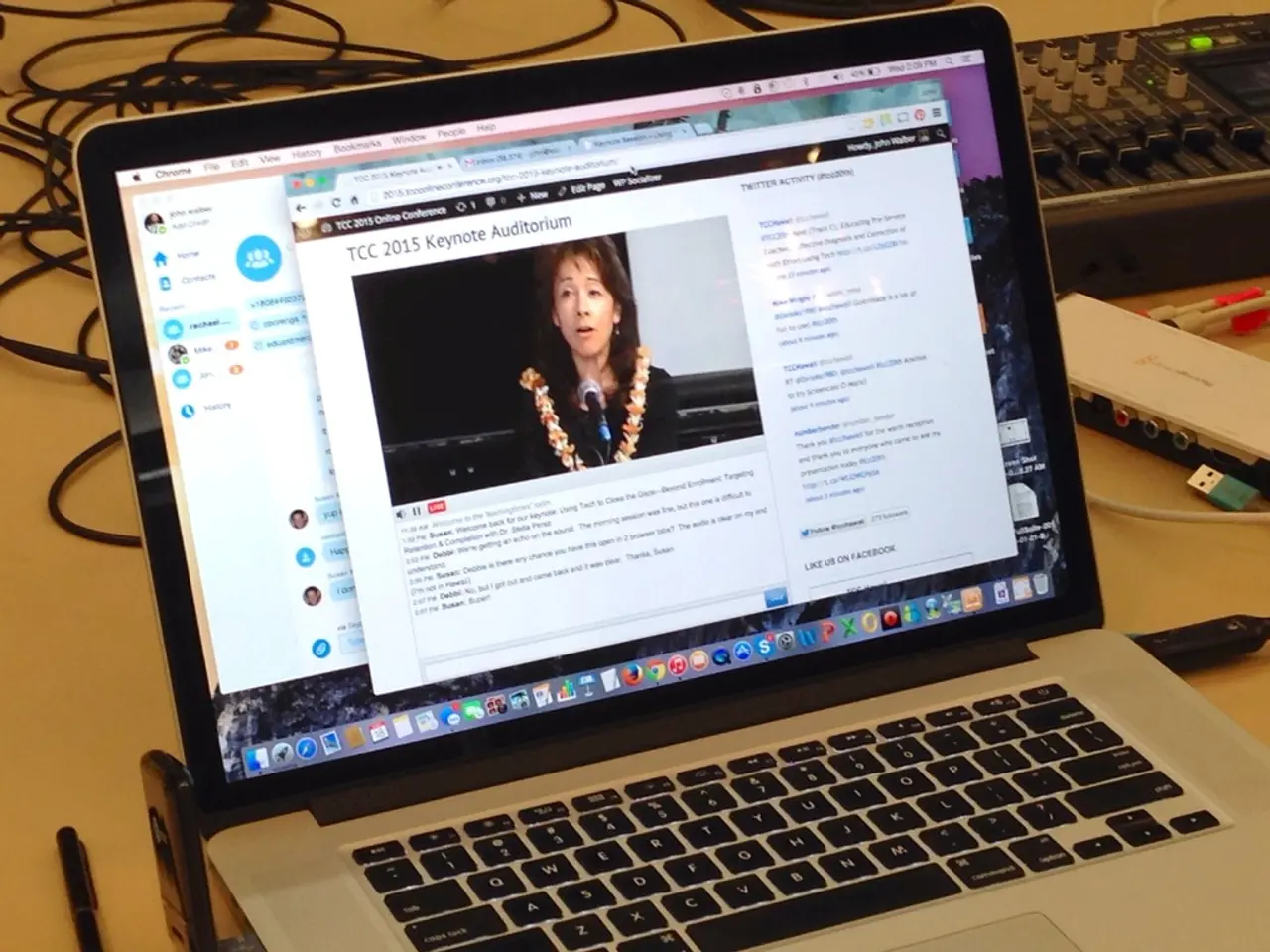Boosting Remote Team Productivity with Data: Tactics Adopted by Successful Distributed Workforce
In today's remote work landscape, productivity tracking is no longer an optional practice - it's essential. One tool that has gained popularity is Hubstaff, a platform offering a variety of features designed to help teams improve productivity and optimize workflows.
Hubstaff's Insights add-on provides a comprehensive view of team productivity patterns, enabling leaders to make data-driven decisions and fostering a culture of continuous improvement. The platform tracks key performance indicators (KPIs) such as task completion rate, team utilization, focused work sessions, and results-driven work.
One of the unique features of Hubstaff is the Activity Levels indicator, which measures productivity based on the percentage of keyboard and mouse strokes in a specific time period. This helps managers gauge how productive an individual or team is, and whether they are spending their time effectively.
The productivity dashboard captures utilization rates, showing if team members are over or under target for the day, and the Engagement Data Insights go beyond hours worked to measure true investment in work. These insights include consistent time-on-task, voluntary overtime, communication patterns, and drops in activity.
Employee pulse surveys are another valuable tool offered by Hubstaff. These surveys capture sentiment, job satisfaction, and motivation trends, empowering leaders to foster psychological safety and create a positive team culture.
In addition to these features, Hubstaff offers GPS tracking, geofenced job sites, built-in payments, and integrations to enhance productivity tracking and workflow optimization. The Workstyle Revolution Report, published by Hubstaff, outlines key insights on focus time, task breakdowns, and performance trends in remote environments.
To effectively measure and track remote employee productivity using data, organizations should combine clear goal-setting, advanced monitoring tools, and respectful data practices. Key steps include setting explicit productivity targets and KPIs tailored to remote work outputs, employing time-tracking and monitoring software, regular communication and check-ins, empowering employee self-monitoring, respecting privacy and compliance, and using data to optimize processes.
By following these practices, managers can achieve a balanced, data-informed approach that tracks remote productivity reliably without micromanaging or breaching employee trust. In fact, 98% of U.S. team members want the option to work remotely at least part of the time, highlighting the growing importance of effective remote work management.
Employee productivity report templates are available in the Hubstaff library to evaluate team performance and make data-driven decisions. Utilizing tools and tracking work is the starting point of building a culture of continuous improvement, effective team collaboration, and purposeful performance.
In conclusion, with the right tools and practices, measuring and improving remote employee productivity is within reach. By combining clear goal-setting, advanced monitoring tools, and respectful data practices, organizations can create a productive and thriving remote work environment.
[1] Hubstaff. (n.d.). Hubstaff Productivity Software. Retrieved from https://www.hubstaff.com/ [2] Hubstaff. (2021). Workstyle Revolution Report. Retrieved from https://www.hubstaff.com/workstyle-revolution-report/ [3] Hubstaff. (n.d.). Hubstaff Library. Retrieved from https://www.hubstaff.com/library/ [4] Kickidler. (n.d.). Employee Monitoring Software. Retrieved from https://kickidler.com/ [5] Traqq. (n.d.). Time Tracking Software. Retrieved from https://www.traqq.com/ [6] BrowseReporter. (n.d.). Employee Monitoring Software. Retrieved from https://www.browse-reporter.com/
- For data-driven decision making and continuous improvement, the productivity tracking tool Hubstaff offers an Insights add-on that provides a detailed view of team productivity patterns.
- One of the unique features of Hubstaff is the Activity Levels indicator, which uses keyboard and mouse strokes to measure productivity and help managers gauge individual or team productivity effectively.
- The Engagement Data Insights in Hubstaff reveal more than just hours worked, capturing consistent time-on-task, voluntary overtime, communication patterns, and drops in activity.
- To evaluate team performance further, Hubstaff provides employee pulse surveys that capture sentiment, job satisfaction, and motivation trends, promoting a positive team culture.
- In their Workstyle Revolution Report, published by Hubstaff, key insights on focus time, task breakdowns, and performance trends in remote environments can be found.




